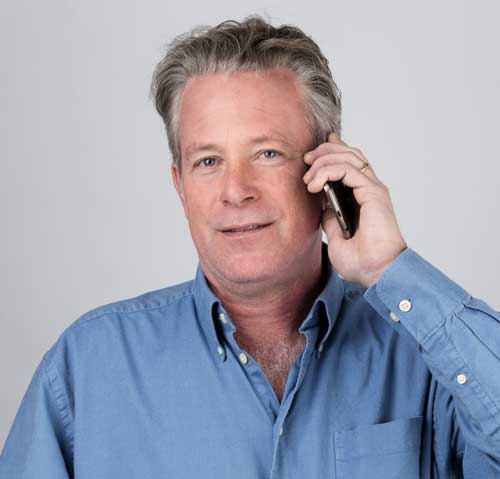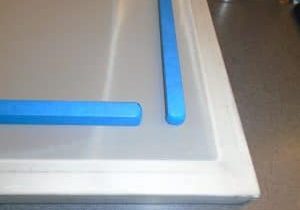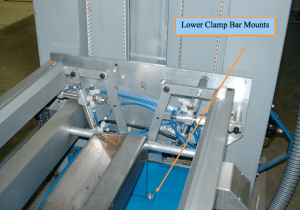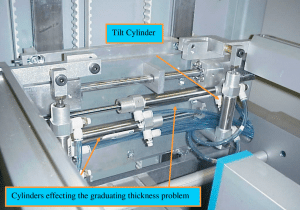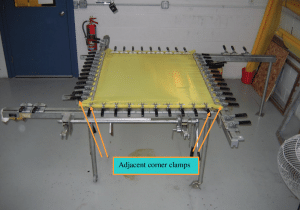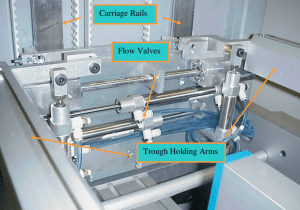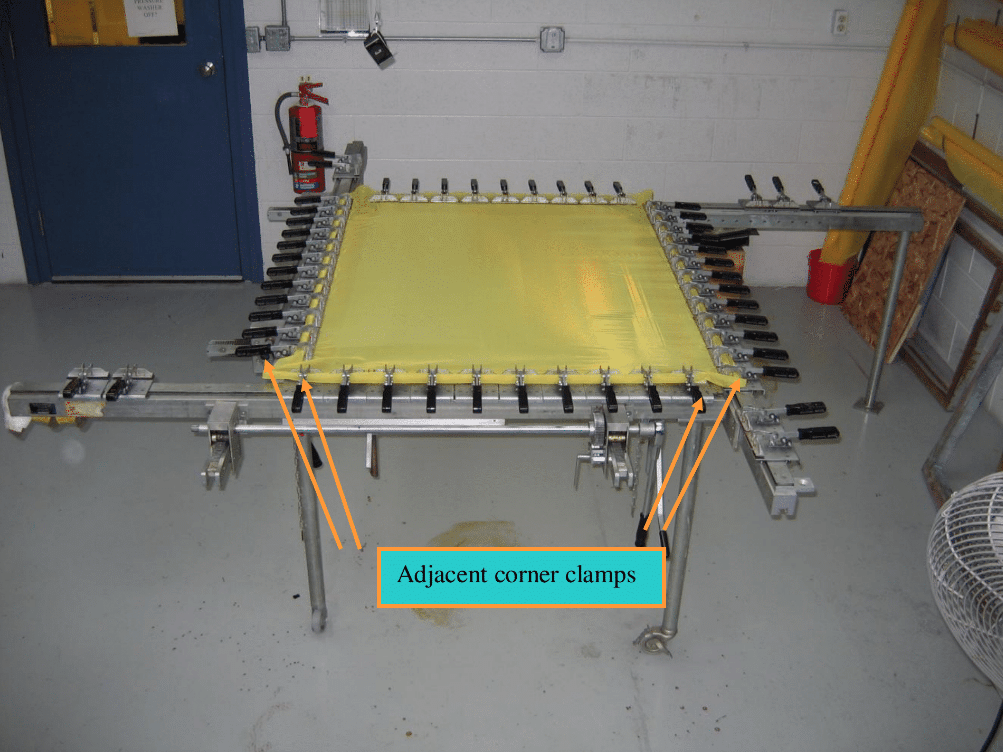
The general operating principle of a mechanical stretching system is four rails each containing individual stretching clamps that move along the rail as the screen is tensioned and the mesh elongates.
Adjust the stretching system’s size
To properly tension a screen, first adjust the stretching system’s size to accommodate the frame. Load the frame onto the lifting supports and then load the mesh. Make sure the frame is below the mesh plain so the mesh is not being dragged across the frame during the process. Quite often there are small burs on the frame whether it’s metal burs or sharp glue remnants from the previous mesh removal process that would cause tearing.
Lock the mesh along one side first ensuring the edge of the mesh is parallel to the clamps. Unroll the mesh to the opposite side , cut to size and lock it in. Take care that the mesh is straight. Repeat the process for the remaining two sides.
Soften or “bag” the corners
The next step is the most critical for a uniformly tensioned screen. One of the biggest deficiencies to the mechanical system design is that if we start stretching at this point, the corners would become significantly over tensioned. Some manufacturers have improved the design slightly by putting shorter, “double” clamps in 2 of the corners, but this only helps to a degree and could still allow over tensioning in the corners. The solution is to soften or “bag” the corners.
Put a little tension on the mesh to remove any wrinkles. Then, in each corner, loosen the grip of the 2 adjacent clamps. Push down slightly on the mesh in the corner to draw the mesh away from the clamps and retighten the grip. The amount of mesh you pull away from the clamp will depend a bit on the final tension desired and size of the frame so you will need to use a little trial and error.
Alternating tension direction is critical
Begin the tensioning process and make sure to alternate directions as you go. Do not completely tension one direction first and then the other. Similar to changing a tire. You don’t want to lock down one lug nut and move on to the others. Once you have achieved the desired tension, let the system rest (relax) for 10-15 minutes and then bring the tension back up to the desired tension level. The reason for this is that mechanical systems are static. As the mesh relaxes and losses tension the system does not keep pulling as do pneumatic systems. If time allows, repeat the relaxation period one more time.
Gluing the mesh to frame
To glue the mesh to the frame, first raise the frame to the mesh. Most systems accomplish this with mechanical or pneumatic lifting jacks. Make sure there is good contact between the mesh and the frame. Quite often people will use a series of weights on the mesh inside the ID of the frame to achieve a better gluing surface. Typically 5 lbs per foot is sufficient. I prefer steel bar stock (1″ x 1″). Apply the glue as specified by the glue manufacturer and let dry. Once the glue is dry, reduce the tension on the outside of the frame and cut out. One optional step to keep every one down the process line happy, trim and clean up the edges (especially helpful to remove any sharp glue burs).
Refer to my other blogs on stretcher maintenance and proper jaw tension to ensure the mesh is held tightly in the clamp jaw and is not slipping during the stretching process.
If you have a question, please post it in the comments below. If you need immediate support, get in touch.


